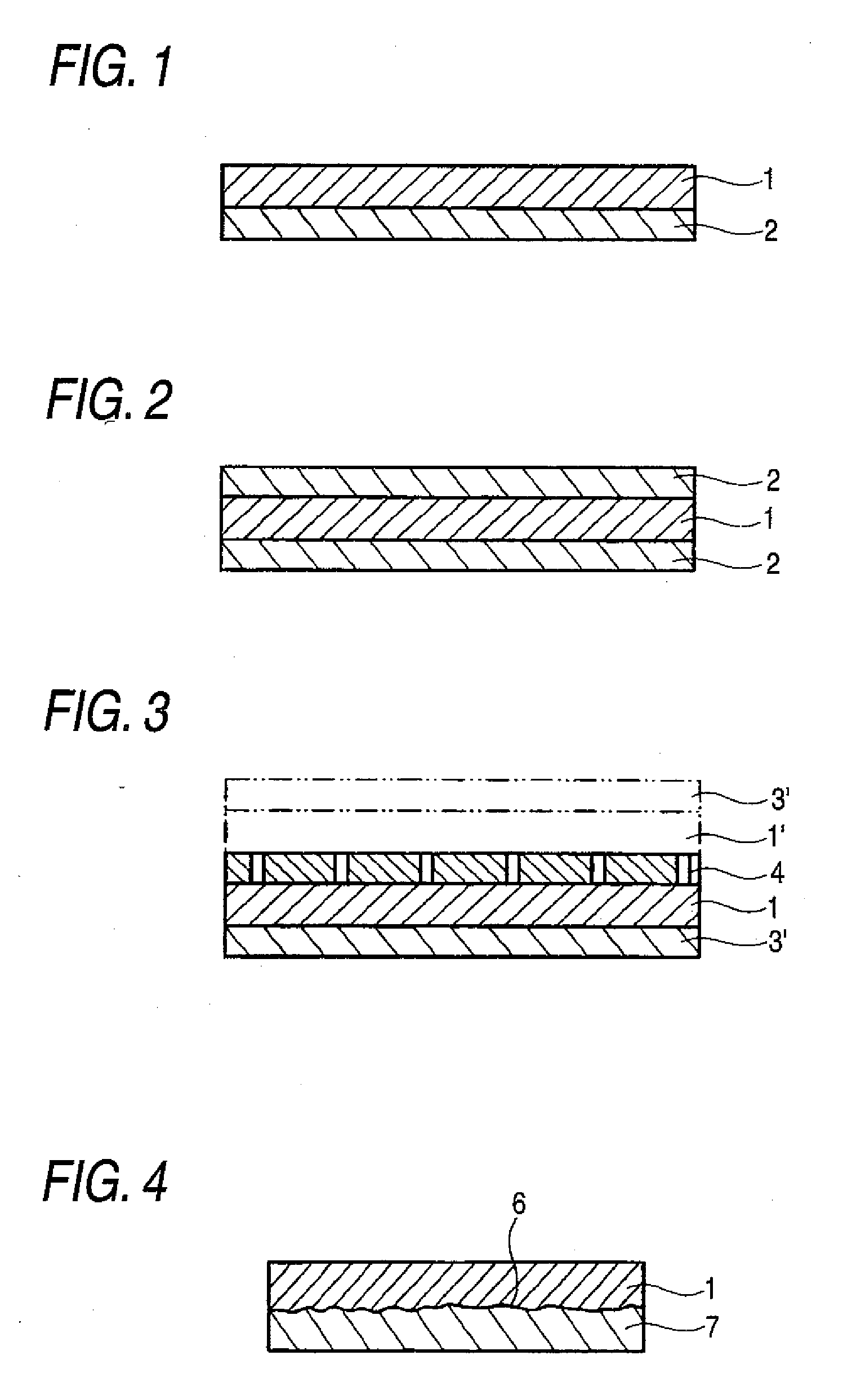Lithium metal foil for battery or capacitor
a technology of lithium ion capacitors and metal foils, which is applied in the direction of cell components, primary cell maintenance/servicing, sustainable manufacturing/processing, etc., can solve the problems of difficult to be put into practical use, difficult to uniformly dope the entire negative electrode with lithium ions, and difficult to achieve uniform doping. , to achieve the effect of easy assembly of capacitors or batteries, easy cutting properties, and good handling properties
- Summary
- Abstract
- Description
- Claims
- Application Information
AI Technical Summary
Benefits of technology
Problems solved by technology
Method used
Image
Examples
example 1
[0132]A polyethylene nonwoven fabric having a thickness of 100 μm and width of 6.5 cm is overlapped on both surfaces of a lithium metal foil having a thickness of 150 μm and a width of 6.0 cm and pressed by rolls made from Delrin™, whereby a nonwoven fabric attached lithium metal foil 1 is obtained. The length of the nonwoven fabric attached lithium metal foil 1 is 100 cm.
[0133]The nonwoven fabric attached lithium metal foil 1 is then cut at intervals of 10 cm using a commercially available guillotine paper cutter, whereby 10 sheets of a strip-shaped nonwoven fabric attached lithium metal foil are obtained with no special difficulties.
example 2
[0137]A separator made of paper having a thickness of 50 μm and width of 6.5 cm is overlapped on both surfaces of a lithium metal foil, in the same manner as in Example 1 except that the paper is used instead of the polyethylene nonwoven fabrics having a thickness of 100 μm and width of 6.5 cm, and pressed by rolls made from Delrin™, whereby a nonwoven fabric integrated lithium metal foil 2 is obtained. The length of the nonwoven fabric integrated lithium metal foil 2 is 100 cm.
[0138]The nonwoven fabric integrated lithium metal foil 2 is then cut at intervals of 10 cm using a commercially available guillotine paper cutter, whereby 10 sheets of a strip-shaped nonwoven fabric integrated lithium metal foil are obtained with no special difficulties.
[0139]As can be seen from Examples and Comparative Examples, since the lithium metal foil adheres firmly to a metal, it is difficult to cut the lithium metal foil using a metallic cutting blade; however, when the lithium metal foil is sandwic...
example 3
[0140]A polyethylene nonwoven fabric having a thickness of 100 μm and width of 6.5 cm is overlapped on a single surface of a lithium metal foil having a thickness of 150 μm and a width of 6.0 cm and pressed by rolls made from Delrin™, whereby a nonwoven fabric attached lithium metal foil 3 is obtained. The length of the nonwoven fabric attached lithium metal foil 3 is 100 cm.
[0141]The nonwoven fabric attached lithium metal foil 3 is then cut at intervals of 10 cm using a commercially available guillotine paper cutter, whereby 10 sheets of a strip-shaped nonwoven fabric attached lithium metal foil are obtained in about the same as in Example 1 although some lithium metal is adhered to the cutting blade of the cutter.
PUM
| Property | Measurement | Unit |
|---|---|---|
| thickness | aaaaa | aaaaa |
| thickness | aaaaa | aaaaa |
| thickness | aaaaa | aaaaa |
Abstract
Description
Claims
Application Information
 Login to View More
Login to View More - R&D
- Intellectual Property
- Life Sciences
- Materials
- Tech Scout
- Unparalleled Data Quality
- Higher Quality Content
- 60% Fewer Hallucinations
Browse by: Latest US Patents, China's latest patents, Technical Efficacy Thesaurus, Application Domain, Technology Topic, Popular Technical Reports.
© 2025 PatSnap. All rights reserved.Legal|Privacy policy|Modern Slavery Act Transparency Statement|Sitemap|About US| Contact US: help@patsnap.com



